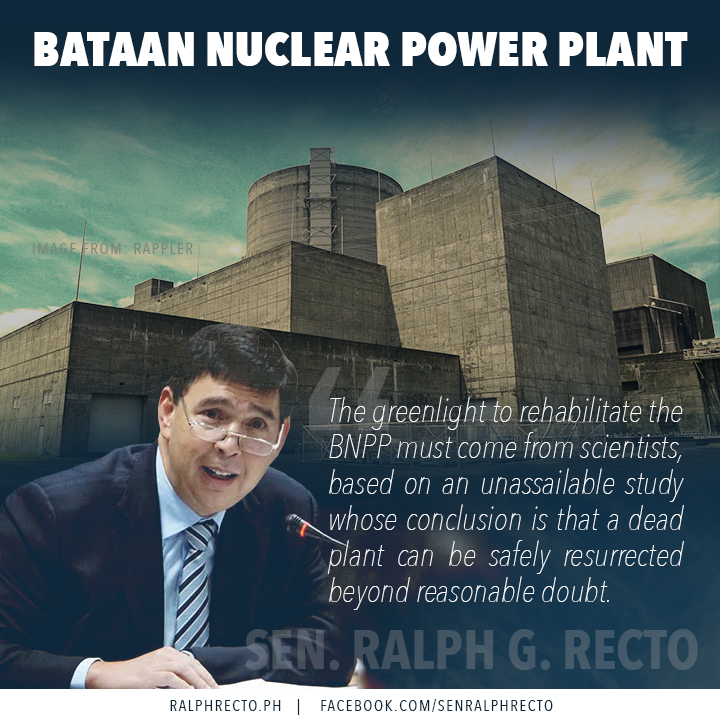Scientists, not bureaucrats, must greenlight BNPP rehab – Recto
The greenlight to rehabilitate must come from scientists, based on an unassailable study whose conclusion is that a dead plant can be safely resurrected beyond reasonable doubt.
It should be a science-based decision, and not because someone has a “lightbulb” moment and then immediately orders that the plant be switched on.
There is also the question of economics. Will it be cheaper in the long run? How much would taxpayers shoulder? How much in contingent liabilities will be guaranteed by the government?
Here, some painful history lessons which must not be repeated must be heeded. We paid almost P70 billion for an overpriced plant that never produced a single watt of electricity.
If restarting the plant would require another P50 billion, then it is but proper that all financial transactions related to the project must be placed under the glare of a powerful spotlight.
If it would require taxpayers’ money, then put the details in the national budget. Both debt ledgers and safety blueprints must be FOI-compliant.
The decision to rehabilitate the plant must also be viewed within the context of the country’s energy needs. The forecast is that by 2030, we must have 30,189 MW of dependable capacity, up from the current 17,925 MW.
To bridge the gap, about 6,178 MW have been committed, and more tenders are forthcoming. Are the committed projects and indigenous sources already enough to bridge the projected gap?
The government must also disclose the regulatory, independent review and accreditation process that will be followed. This is not a rice mill which can be given a license to operate perfunctorily.
As recommended by an eight-person International Atomic Energy Agency (IAEA) panel in 2008, the technical evaluation must be done by a group of nuclear power experts.
The reported Korean seller of the equipment should never be allowed to certify its own product.
Lastly, government should encourage experts to share their views on the issue. There should be no blackout on informed discussion.
It must be ready to pull the plug should it become clear that the planned rehabilitation cannot hurdle technical and economic requirements. The project must have an abort button.
One advocate I respect said that operating the plant would displace the equivalent of 1.7 million tons of coal loaded on a 200-kilometer train a year.
Other voices I’ve heard counsel caution at an age when countries like Germany are shutting down 17 nuclear plants by 2022 and Japan is bidding sayonara to many of theirs.
Before government makes firm orders and commitments, it should hear these voices first.


